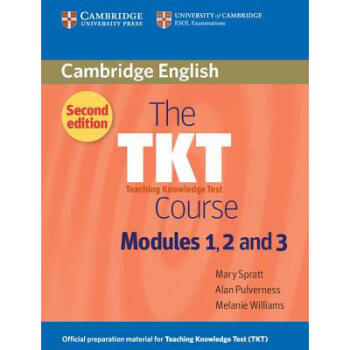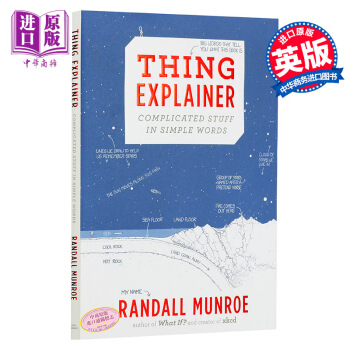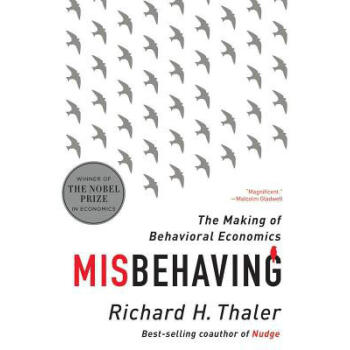![The Sense of Style The Thinking Person's Guide 英文原版 [平装]](https://pic.windowsfront.com/19538287/5719c26dN4cf46b7d.jpg)

具体描述
内容简介
A short and entertaining book on the modern art of writing well by New York Times bestselling author Steven PinkerWhy is so much writing so bad, and how can we make it better? Is the English language being corrupted by texting and social media? Do the kids today even care about good writing? Why should any of us care?
In The Sense of Style, the bestselling linguist and cognitive scientist Steven Pinker answers these questions and more. Rethinking the usage guide for the twenty-first century, Pinker doesn’t carp about the decline of language or recycle pet peeves from the rulebooks of a century ago. Instead, he applies insights from the sciences of language and mind to the challenge of crafting clear, coherent, and stylish prose.
In this short, cheerful, and eminently practical book, Pinker shows how writing depends on imagination, empathy, coherence, grammatical knowhow, and an ability to savor and reverse engineer the good prose of others. He replaces dogma about usage with reason and evidence, allowing writers and editors to apply the guidelines judiciously, rather than robotically, being mindful of what they are designed to accomplish.
Filled with examples of great and gruesome prose, Pinker shows us how the art of writing can be a form of pleasurable mastery and a fascinating intellectual topic in its own right.
作者简介
Steven Pinker is the Harvard College Professor of Psychology at Harvard University. A two-time Pulitzer Prize finalist and the winner of many awards for his research, teaching, and books, he has been named one of Time's 100 Most Influential People in the World Today and Foreign Policy's 100 Global Thinkers.精彩书评
[The Sense of Style] is more contemporary and comprehensive than “The Elements of Style,” illustrated with comic strips and cartoons and lots of examples of comically bad writing. [Pinker’s] voice is calm, reasonable, benign, and you can easily see why he’s one of Harvard’s most popular lecturers.”——The New York Times
“Pinker's linguistical learning…is considerable. His knowledge of grammar is extensive and runs deep. He also takes a scarcely hidden delight in exploding tradition. He describes his own temperament as "both logical and rebellious." Few things give him more pleasure than popping the buttons off what he takes to be stuffed shirts.”
——The Wall Street Journal
“[W]hile The Sense of Style is very much a practical guide to clear and compelling writing, it’s also far more…. In the end, Pinker’s formula for good writing is pretty basic: write clearly, try to follow the rules most of the time——but only the when they make sense. It’s neither rocket science nor brain surgery. But the wit and insight and clarity he brings to that simple formula is what makes this book such a gem.”
——Time.com
“Erudite and witty… With its wealth of helpful information and its accessible approach, The Sense of Style is a worthy addition to even the most overburdened shelf of style manuals.”
——Shelf Awareness
“Forget Strunk and White’s rules——cognitive science is a surer basis for clear and cogent writing, according to this iconoclastic guide from bestselling Harvard psycholinguist Pinker... Every writer can profit from——and every writer can enjoy——Pinker’s analysis of the ways in which skillfully chosen words engage the mind.”
——Publishers Weekly (starred)
“Yet another how-to book on writing? Indeed, but this is one of the best to come along in many years, a model of intelligent signposting and syntactical comportment…Pinker's vade mecum is a worthy addition to any writer’s library.”
——Kirkus Reviews
“In this witty and practical book on the art of writing, Pinker applies insights from the sciences of language and mind to the crafting of clear, elegant prose: #requiredreading.”
——Publishers Weekly, PW pick Fall 2014 Announcements
“Who better than a best-selling linguist and cognitive scientist to craft a style guide showing us how to use language more effectively?”
——Library Journal
“[A] dense, fascinating analysis of the many ways communication can be stymied by word choice, placement, stress, and the like. [Pinker’s] explanations run rich and deep, complemented by lists, cartoons, charts on diagramming sentences, and more.”
——Booklist
“This book is a graceful and clear smackdown to the notion that English is going to the proverbial dogs. Pinker has written the Strunk & White for a new century while continuing to discourage baseless notions such as that the old slogan should have been ‘Winston tastes good AS a cigarette should.’”
——John McWhorter, author of Our Magnificent Bastard Tongue and The Power of Babel
“Great stuff! Only Steven Pinker could have written this marvelous book, and thank heaven he has. ‘Good writing can flip the way the world is perceived,’ he writes, and The Sense of Style will flip the way you think about good writing. Pinker’s curiosity and delight illuminate every page, and when he says style can make the world a better place, we believe him.”
——Patricia T. O’Conner, author of Woe Is I and, with Stewart Kellerman, Origins of the Specious
"A supremely important book...a masterly achievement."
——The New York Times Book Review
"Masterly."
——The Wall Street Journal
"One of the most important books I've read--not just this year, but ever."
——Bill Gates
"Packed with information...Clear, witty, attractively written."
——The New York Review of Books
"A display of fiercely intricate intelligence."
——The Times (London)
"Engaging and provocative . . . It's good to have a mind as lively and limpid as his bringing the ideas of cognitive science to the public."
——Douglas Hofstadter, Los Angeles Times
"Curious, inventive, fearless, naughty."
——The New York Times
"Sweeping, erudite, sharply argued, and fun to read . . . also highly persuasive."
——Time
"Ought to be read by anybody who . . . thinks they already know where they stand on the science wars. . . . It could change their minds."
——The Economist
"Pinker is a star, and the world of science is lucky to have him."
——Richard Dawkins
前言/序言
用户评价
这本书的行文风格简直是一股清流,完全颠覆了我对“指南”类书籍的刻板印象。它没有那种居高临下的说教感,而是像一位知识渊博、风趣幽默的朋友在你身边耐心讲解,语调亲切自然,却字字珠玑。作者似乎深谙如何将复杂的概念用最直观、最贴近日常的方式表达出来,那些原本可能让人望而生畏的写作规则,在他笔下变得像拼图一样,一块块清晰地契合在一起。我尤其喜欢他时不时穿插的那些小故事或者历史典故,它们不仅调剂了阅读的节奏,更重要的是,它们让抽象的规则有了鲜活的载体。读起来完全没有负担,更像是在进行一场愉快的思想漫步,时不时还需要停下来,回味一下刚才那个绝妙的比喻,甚至会忍不住笑出声来。这种将深度思考与轻松表达完美融合的能力,真的非常罕见。
评分我必须得说,这本书的逻辑结构设计得极其精妙。它并非简单地将各种写作技巧罗列堆砌,而是构建了一个层层递进、相互支撑的知识体系。读完一个部分,你自然而然地就会对下一个部分产生强烈的求知欲,因为作者非常善于制造这种“信息缺口”——他总是在关键时刻抛出一个问题,然后引导你思考,直到水到渠成地给出答案。这种递进关系让学习过程变得非常流畅且具有连贯性,知识点不会孤立存在,而是紧密地编织在一起,形成一个强大的知识网络。在我以往的阅读经验中,很多指南类书籍读完后总觉得零散,但这本却能形成一个完整而有力的认知框架。它不仅教你怎么写,更重要的是,它让你理解了“为什么”要那样写,这种底层逻辑的梳理,对提升思维清晰度都有着潜移默化的影响。
评分阅读体验的舒适度是衡量一本好书的重要标准,而这本书在这方面做得近乎完美。排版上的留白恰到好处,眼睛不容易疲劳,即便是长时间沉浸其中,也不会感到压迫感。更值得称赞的是,作者引用和旁证的材料选择非常考究,它们既有足够的权威性,又不会显得高高在上,反而增强了论述的说服力。每一次引用都像是一个强有力的脚注,支撑着前文的论点,让整个论述显得坚实可靠。我感觉自己不是在被动接受信息,而是在和一位严谨的学者进行一场高水平的对话,他既尊重我的智力水平,又不断用高质量的素材来挑战我的既有观念。这种高质量的互动感,让阅读过程充满了智力上的愉悦和满足感,实属难得。
评分这本书带给我的,远不止写作技巧的提升。更深层次的影响在于它重塑了我对“清晰思考”的理解。作者反复强调,有效的写作是清晰思考的外在体现,因此,这本书的很大一部分篇幅都在引导读者如何进行更精准的观察和更有条理的推理。我发现自己开始有意无意地去审视日常交流中的表达,尝试去挖掘那些隐藏在模糊语句背后的真正意图。它就像一面镜子,照出了我思维中那些模糊不清的角落,并提供了一套工具去打磨它们。这不仅仅是关于语法和句式的修正,更是一种认知层面的升级。对于任何从事需要深度沟通和分析工作的专业人士来说,这本书的价值是无法用金钱衡量的,它真正帮助我建立了更可靠的思维操作系统。
评分这本书的封面设计简直是视觉上的享受,那种沉稳又不失活泼的排版,让人一眼就觉得里面装的绝对不是什么枯燥的理论教材。拿到手里那厚实的手感,纸张的质地也相当不错,带着一种特有的油墨香气,让人忍不住想立刻翻开它。我尤其欣赏它在细节上的处理,比如章节标题的字体选择,既有学术的严谨,又不失现代感,让人在阅读过程中感到非常舒适。这不光是一本书,更像是一件精心制作的艺术品,光是放在书架上,都能提升整个空间的格调。我本来是抱着试试看的心态买的,但仅仅是浏览目录和前言,我就知道这次绝对是淘到宝了。作者在编排上的匠心独运,从一开始就为接下来的深度阅读奠定了积极的基调。每次拿起它,都像是在准备进行一场充满期待的知识探索之旅,每一次翻页都伴随着对设计者美学品味的赞叹。
相关图书
本站所有内容均为互联网搜索引擎提供的公开搜索信息,本站不存储任何数据与内容,任何内容与数据均与本站无关,如有需要请联系相关搜索引擎包括但不限于百度,google,bing,sogou 等
© 2025 book.coffeedeals.club All Rights Reserved. 静流书站 版权所有

![How a Seed Grows [平装] pdf epub mobi 电子书 下载](https://pic.windowsfront.com/19547912/575e4d17Nff009e58.jpg)
![What Are You Looking At? The Surprising, Shocki [平装] [18--UP] pdf epub mobi 电子书 下载](https://pic.windowsfront.com/19610028/574be362Nba191f37.jpg)
![Planetes Omnibus Volume 1 [平装] pdf epub mobi 电子书 下载](https://pic.windowsfront.com/19634219/57833286Nba2701cc.jpg)

![Hillbilly Elegy A Memoir of a Family and Cultur [精装] pdf epub mobi 电子书 下载](https://pic.windowsfront.com/19662238/5af94fa7N2f7e3d1e.jpg)


![【中商原版】[英文原版]A Long Way Gone: 长路漫漫 pdf epub mobi 电子书 下载](https://pic.windowsfront.com/1116185518/rBEhVVNKVBgIAAAAAALhiqxQHWwAAL3VgCBtWoAAuGi406.png)











